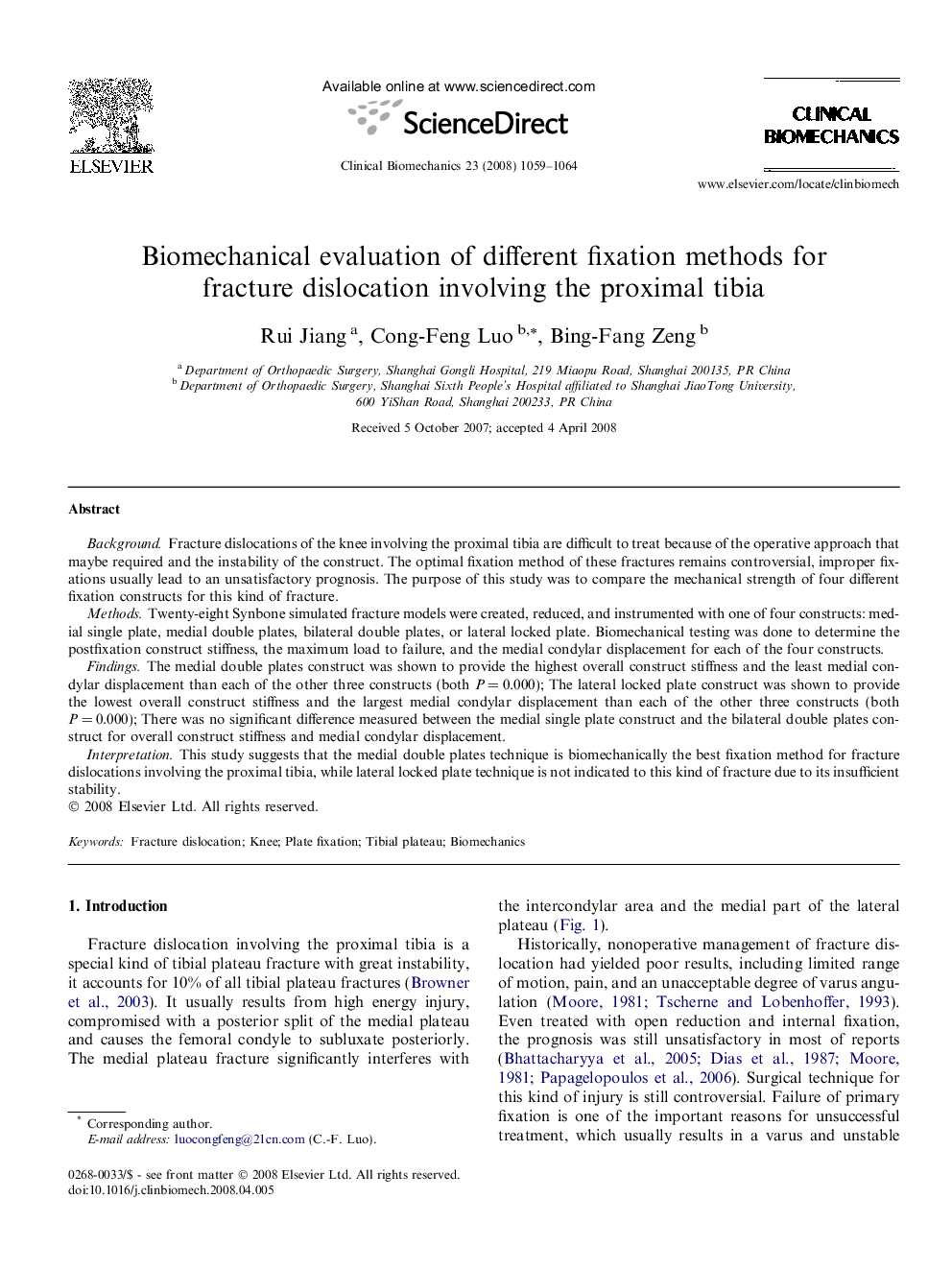| کد مقاله | کد نشریه | سال انتشار | مقاله انگلیسی | نسخه تمام متن |
|---|---|---|---|---|
| 4051069 | 1264972 | 2008 | 6 صفحه PDF | دانلود رایگان |

BackgroundFracture dislocations of the knee involving the proximal tibia are difficult to treat because of the operative approach that maybe required and the instability of the construct. The optimal fixation method of these fractures remains controversial, improper fixations usually lead to an unsatisfactory prognosis. The purpose of this study was to compare the mechanical strength of four different fixation constructs for this kind of fracture.MethodsTwenty-eight Synbone simulated fracture models were created, reduced, and instrumented with one of four constructs: medial single plate, medial double plates, bilateral double plates, or lateral locked plate. Biomechanical testing was done to determine the postfixation construct stiffness, the maximum load to failure, and the medial condylar displacement for each of the four constructs.FindingsThe medial double plates construct was shown to provide the highest overall construct stiffness and the least medial condylar displacement than each of the other three constructs (both P = 0.000); The lateral locked plate construct was shown to provide the lowest overall construct stiffness and the largest medial condylar displacement than each of the other three constructs (both P = 0.000); There was no significant difference measured between the medial single plate construct and the bilateral double plates construct for overall construct stiffness and medial condylar displacement.InterpretationThis study suggests that the medial double plates technique is biomechanically the best fixation method for fracture dislocations involving the proximal tibia, while lateral locked plate technique is not indicated to this kind of fracture due to its insufficient stability.
Journal: Clinical Biomechanics - Volume 23, Issue 8, October 2008, Pages 1059–1064